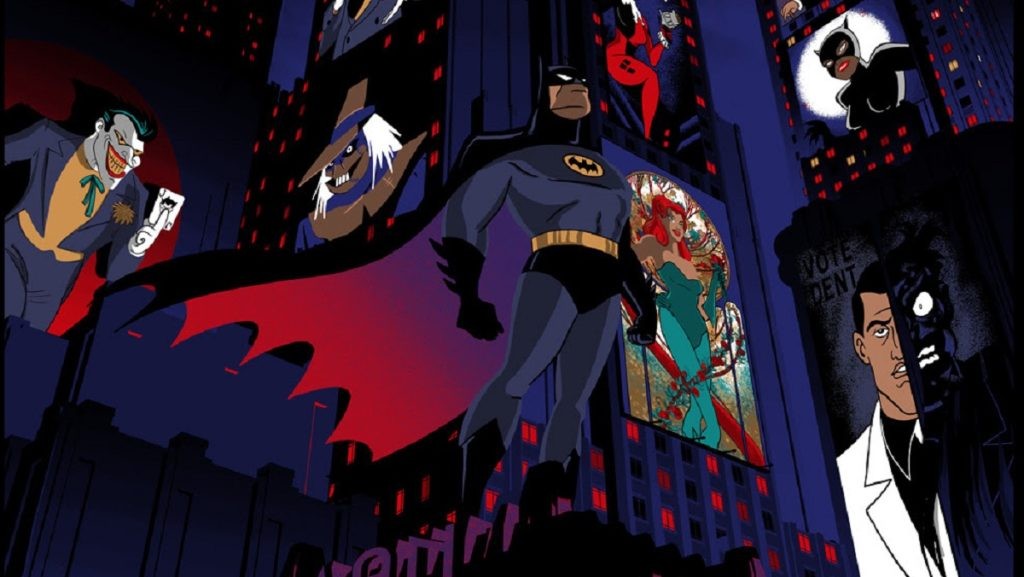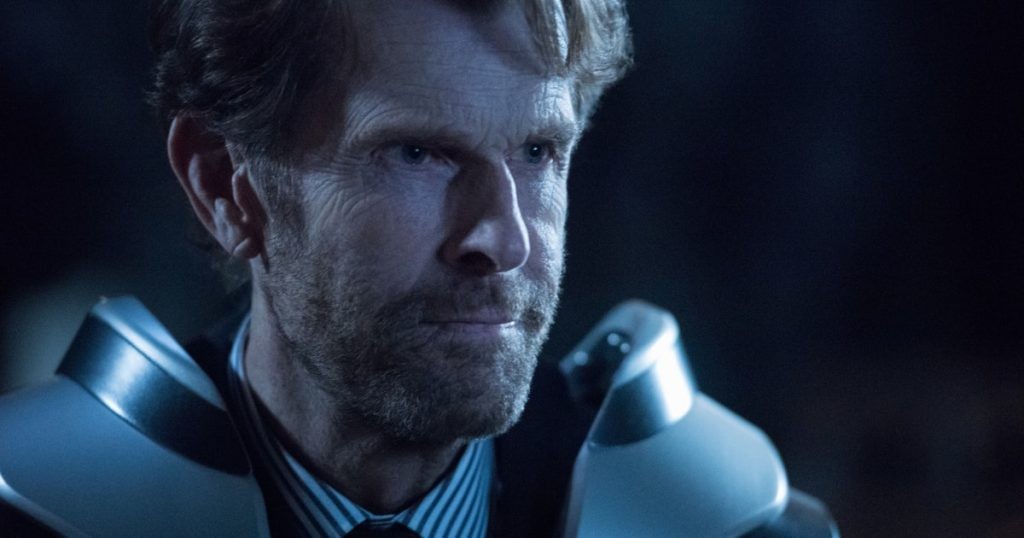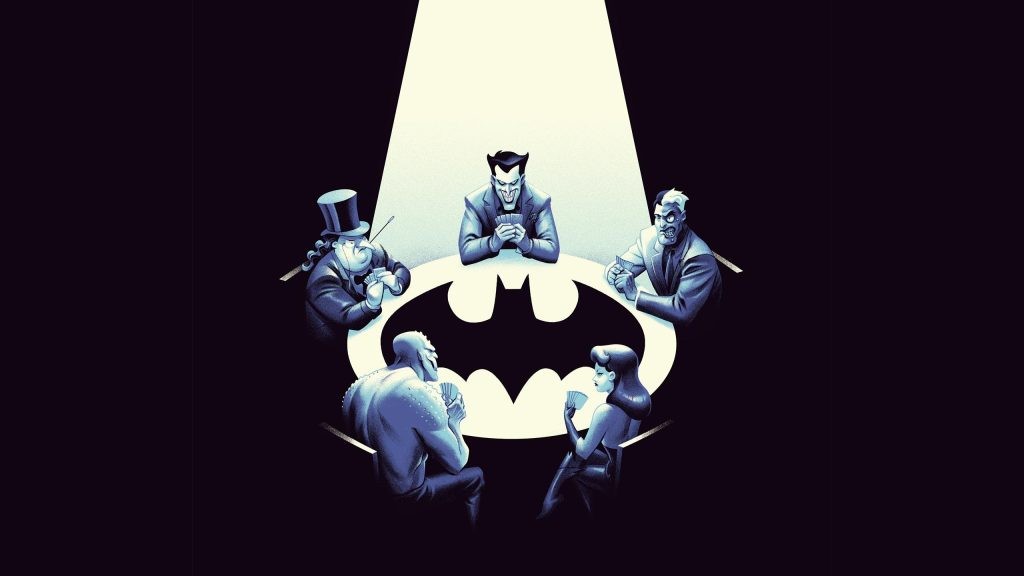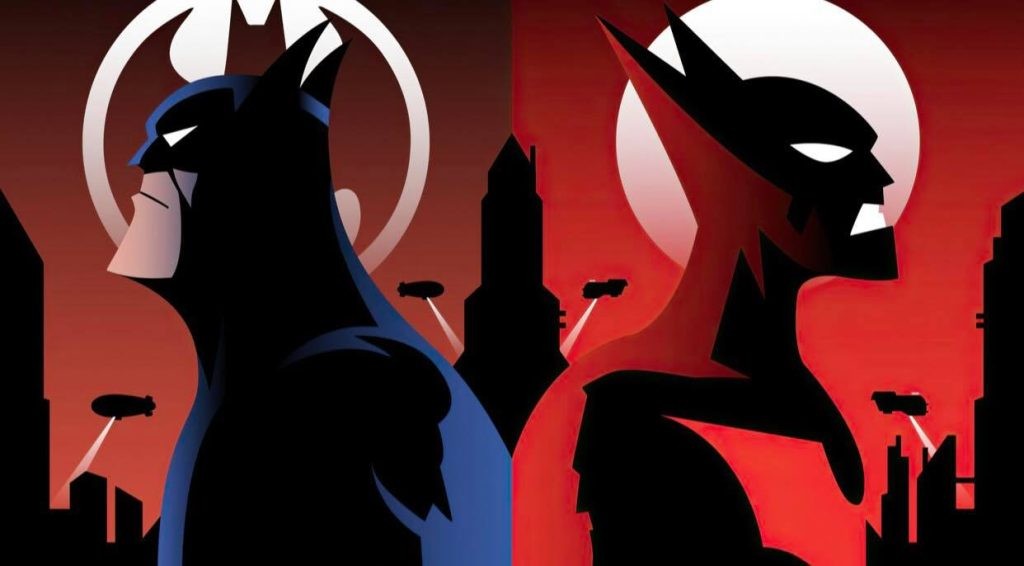In the heart of a timeless, art deco-inspired Gotham City, a caped crusader emerged from the shadows, not just to save a city plagued by crime but to revolutionize the world of television and animation. Batman: The Animated Series (BTAS) was more than just a superhero cartoon; it was a groundbreaking work of art that left an indelible mark on the medium. As we traverse the dark alleys and soaring skyscrapers of the show’s legacy, we discover the profound influence it had on the landscape of television and animation.
With its artistry, character depth, and adult themes, BTAS transformed the way we perceive animated storytelling, setting the stage for a new era of sophisticated and captivating television. In this article, we embark on a journey through the shadows of Gotham to unveil the enduring impact of Batman: The Animated Series on the world of entertainment.
Artistic Innovation

Inspired by art deco and film noir, the series used a rich palette of dark, muted colors, intricate backgrounds, and architectural designs that harkened back to the classic era of the 1930s and ’40s. This departure from the standard, brightly colored Saturday morning cartoons of the time was a daring artistic choice. It not only set the show apart but also created a timeless, cinematic atmosphere that resonated with viewers of all ages. One notable example of its innovation is the use of black paper for background art, which enhanced the show’s dark, moody ambiance. This technique, combined with a deliberate focus on lighting and shadow, created a unique visual language that had not been seen in animated series before.
The artistic team behind BTAS paid meticulous attention to detail. From the elaborate, gothic architecture of Gotham City to the subtle nuances of character expressions, the show’s commitment to realism elevated the standards of animation. Each frame was a work of art, and this commitment to visual richness added depth to the storytelling. Its influence is seen not only in subsequent animated series but also in the way animation is regarded as a legitimate medium for sophisticated storytelling and artistic expression. BTAS remains a shining example of how artistry can elevate the impact and cultural significance of animated television.
Character Depth and Development

BTAS delved into the psychological aspects of its characters, particularly Batman/Bruce Wayne. The show explored Bruce’s inner turmoil, guilt over his parents’ death, and his unwavering commitment to justice. This psychological depth made Batman a more relatable and multifaceted character. BTAS introduced moral ambiguity into the narrative. Batman’s no-kill rule was consistently tested, and viewers were confronted with complex moral dilemmas. This added depth to the storytelling, as characters grappled with their own sense of right and wrong. BTAS utilized long-form storytelling, allowing character development to unfold gradually over multiple episodes and seasons. This approach allowed for more nuanced character arcs and relationships to develop over time.
The series often dedicated episodes to exploring the origins and motivations of various characters. Iconic villains like the Joker, Two-Face, and Mr. Freeze were given tragic and sympathetic backstories, humanizing them and making their actions more understandable, if not justifiable. Throughout the series, characters evolved and grew. Batman, for instance, developed meaningful relationships with characters like Robin and Commissioner Gordon, showcasing his capacity for emotional growth. Villains occasionally experienced redemption arcs or moments of self-awareness, illustrating that change was possible. BTAS incorporated romantic subplots, such as the relationship between Batman and Catwoman or Bruce Wayne’s attempts at love. These subplots contributed to character development and explored the personal lives of characters beyond their alter-egos.
Voice Acting

Kevin Conroy’s portrayal of Batman/Bruce Wayne and Mark Hamill’s iconic take on the Joker are widely regarded as definitive representations of these characters. Conroy’s deep, commanding voice captured the gravitas of Batman, while Hamill’s manic and sinister tones gave the Joker his signature madness. The voice actors in BTAS excelled at distinguishing each character with unique vocal qualities. Whether it was the refined British accent of Alfred Pennyworth, the raspy tone of Harvey Dent before his transformation into Two-Face, or the sultry purr of Catwoman, the characters’ voices were instantly recognizable and added depth to their personalities.
They conveyed a wide spectrum of emotions, from Batman’s brooding introspection to Joker’s maniacal laughter, with authenticity and nuance. This emotional depth contributed to the viewers’ connection with the characters. The chemistry between the voice actors was palpable. Kevin Conroy and Loren Lester (Robin) conveyed the mentor-mentee relationship between Batman and Robin convincingly. Mark Hamill’s dynamic exchanges with other actors, particularly Arleen Sorkin as Harley Quinn, brought the characters’ relationships to life. The talented voice cast elevated the show’s already exceptional dialogue. Their delivery of witty one-liners, dramatic monologues, and poignant exchanges added an extra layer of dimension to the characters and storytelling.

Mature Storytelling
BTAS tackled complex and mature themes that went beyond the typical superhero fare. Episodes explored subjects like the nature of justice, the consequences of one’s actions, and the blurred line between hero and vigilante. It depicted his grief, guilt, and inner turmoil resulting from his parents’ murder. This emotional depth made the character more relatable and human, resonating with viewers of all ages. The show didn’t provide simplistic solutions to complex problems. Batman’s commitment to not killing his foes led to recurring challenges and moral quandaries. This nuanced approach emphasized that real-life issues often lack easy resolutions.
BTAS reimagined classic Batman villains as multi-dimensional characters. Villains like Mr. Freeze, Two-Face, and Clayface were given tragic backstories, making them more sympathetic and exploring the circumstances that led them down their criminal paths. BTAS wasn’t afraid to explore the consequences of actions. Characters faced lasting repercussions for their choices, whether it was Batman’s physical injuries, Harvey Dent’s transformation into Two-Face, or the Joker’s ongoing battles with Batman. While designed as a children’s show, BTAS had a mature sensibility that appealed to adult viewers. It balanced entertainment for younger audiences with layered storytelling that engaged older viewers, making it a truly cross-generational experience.
Legacy and Spin-Offs

BTAS was the cornerstone of the DC Animated Universe, a shared continuity encompassing multiple animated series and films. This interconnected universe allowed for the exploration of various DC Comics characters and storylines. One of BTAS’s strengths was its voice cast, which remained consistent across many DCAU projects. This continuity enhanced the sense of a shared universe, making it feel like the same characters were inhabiting different series. The success of BTAS and the DCAU influenced subsequent DC adaptations, including live-action films and animated projects. The DCAU’s mature storytelling and character depth set a benchmark for the portrayal of DC characters in various media.
The DCAU was known for its crossover events and team-ups. These episodes allowed for dynamic interactions between characters from different series, creating exciting storytelling opportunities. BTAS and its spin-offs delved into the stories of secondary characters, providing them with depth and development. For example, Batman Beyond explored the future of Gotham and introduced a new Batman in Terry McGinnis. In conclusion, Batman: The Animated Series established a legacy by giving birth to the DC Animated Universe and inspiring a host of spin-offs and related projects. Its influence extended not only to subsequent animated series but also to the broader world of DC Comics adaptations, leaving an indelible mark on the portrayal of iconic superheroes in various forms of media.
For more content from FandomWire, check out our LinkTree!

